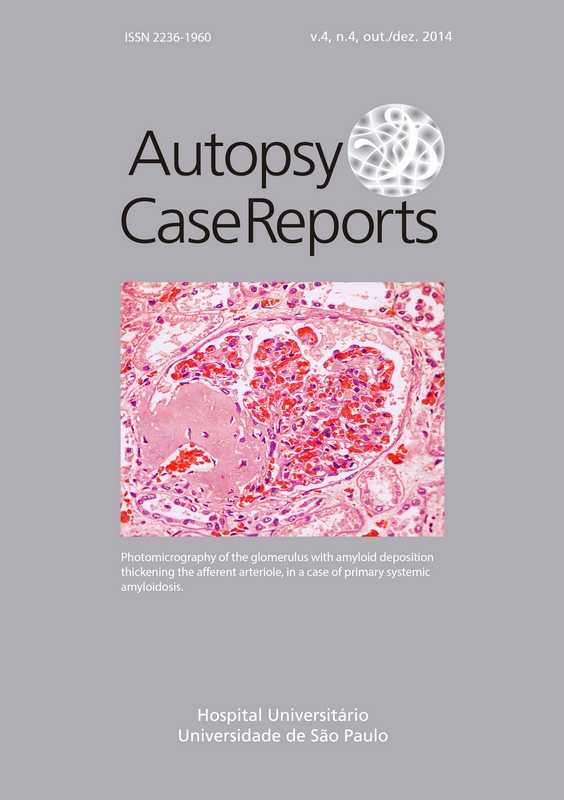Effectiveness of surgical decompression in the treatment of a calcifying cystic odontogenic tumor
DOI:
https://doi.org/10.4322/acr.%25y.98465Keywords:
Odontogenic Tumors, Decompression, Surgical, CurettageAbstract
The calcifying odontogenic cystic tumor (CCOT) is a benign lesion of odontogenic origin characterized by an ameloblastoma-like epithelium with ghost cells that may calcify. Despite broadly considered as a cyst, some investigators prefer to classify it as a neoplasm. Clinically, it occurs predominantly during the third decade of life. No difference in gender prevalence has been observed nor predilection of the lesion between maxilla and mandible. The most affected region extends from the incisor tooth to bicuspids. The classic treatment of the lesion is full excision, although a different approach may be determined by the possible association with another odontogenic tumor. Depending on the tumor size and the vicinity with important structures, decompression may be undertaken before its complete removal. The present report describes a case of CCOT with large proportions, located at the right maxilla and extending to the maxillary sinus, nasal cavity, and orbital floor. The treatment option was surgical decompression as the initial procedure, with satisfactory outcome. After partial remission, the lesion was fully removed, and the post-operative follow-up was uneventful.Downloads
Downloads
Published
2014-12-22
Issue
Section
Article / Clinical Case Report
License
Copyright
Authors of articles published by Autopsy and Case Report retain the copyright of their work without restrictions, licensing it under the Creative Commons Attribution License - CC-BY, which allows articles to be re-used and re-distributed without restriction, as long as the original work is correctly cited.
How to Cite
Silva, Y. S. da, Queiroz, A. G. dos S., Ferraz, F. W. da S., Pinto Júnior, D. dos S., Nunes, F. D., & Elias, F. M. (2014). Effectiveness of surgical decompression in the treatment of a calcifying cystic odontogenic tumor. Autopsy and Case Reports, 4(4), 43-49. https://doi.org/10.4322/acr.%y.98465



